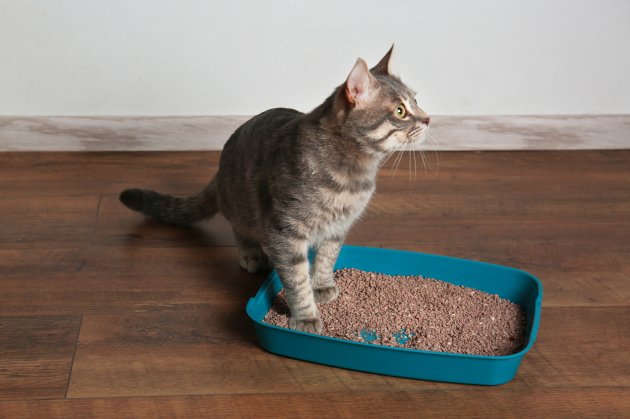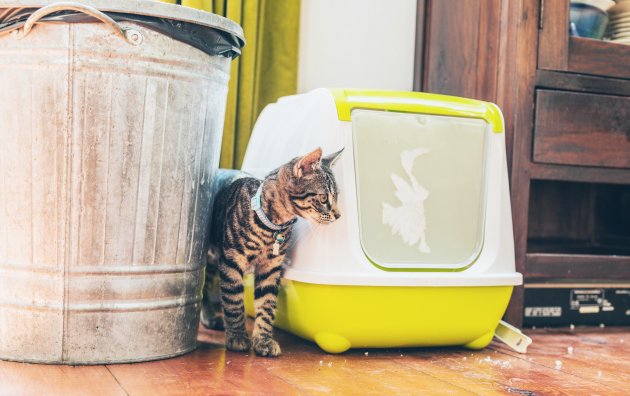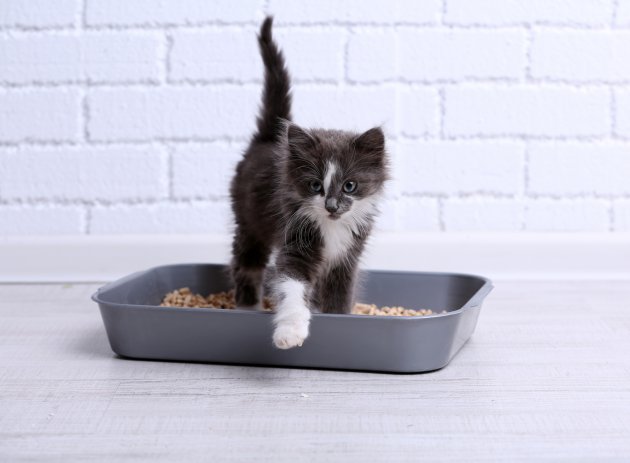Cats are notorious for being clean and smart, so chances are, your new kitten will already know how to use the litter box when you bring her home. However, if your fur baby is a stray that is used to being outside, you may have to acquaint him with the idea of using a litter pan.
Either way, we have lots of information, top tips, and a guide for litter box training a cat. Let's dig into this vital information!
How to Litter Box Train, a Cat
It is recommended to have at least one litter box per cat in your household for your pet's convenience. Place these pans where you will want to keep them for the duration of your feline's life.
When you first bring Kitty home, remember she has no idea of the layout of this strange building. To help her, place her in the litter box - she will probably immediately jump back out. Allow her to roam free for a few minutes, then pick her up and place her again in the litter box. This shows Kitty where the litter pan is located in proximity to the rest of her living space.
Watch your kitten closely, especially after meals or if she is acting like she may have to "go." If she is having a difficult time locating the box, repeat the above process until you see her using the box.

Tips on Litter Box Training a Cat
Here are some general tips that may help you in the process of litter training your cat.
Tip #1 - Place the litter box in a quiet, low traffic area of your home - I use a small broom closet located in a mudroom. Do not place it near your cat's food or bed.
Tip #2 - Clean the litter pan often, as most cats do not like to use the soiled litter.
Tip #3 - Thoroughly wash out the litter box with soapy detergent at least once a month. Do not use bleach or harsh chemicals as these can be toxic to your pet.
Possible Reasons Why a Cat Isn't Using the Litter Box
If your cat has suddenly stopped using the litter box, there is a reason. Read through our list of possible reasons why a cat isn’t using the litter box to determine what the cause may be.
1. Stress
Has something changed in your household? Is there a new baby, or spouse? Has your cat’s favorite child gone off to college? Did you bring home a new fur baby for your current Kitty to co-habitat with? Or did you simply move the litter box to a different location? Any of these issues are enough to stress out a sensitive feline.
The first thing you need to do is pinpoint the stressor and eliminate it if possible. For those issues that are not so easily solved, try using pheromone sprays or diffusers that help calm a cat’s nerves.
2. Multi-Cat Household Issues
Conflicts among feline “siblings” can occur. When this happens, it can lead to the dominant cat “controlling” the litter box, making the “lesser” one feel afraid to use it. To help solve this issue set up another litter box in a different location in your home.
3. Aversion to the Cat Litter
Have you recently changed your cat’s litter? Cats are creatures of habit and can be finicky when it comes to the texture and scent of their litter. Try going back to the old brand of litter to see if that changes Kitty’s litter box aversion.
Even if the cat litter is the right brand, it may be too deep. Try using only one to two inches of cat litter when replacing the litter.
4. Litter Box Style Aversion
In the same line of thought, changing the style of the litter box may also be upsetting your feline (e.g., he is used to an open box and you swapped it out for a covered litter pan).
5. Dirty Litter Box
Some cats will not use a dirty litter box - would you want to go in an unflushed or dirty toilet? If you have a super-fussy feline, then be sure to remove the soiled litter after each of your cat’s visits.

Medical Reasons For Why a Cat May Not Want to Use the Litter Box
If you have ruled out the above reasons, your cat may be experiencing a medical condition. These can include;
Urinary Tract Infection (UTF) - Cats that frequently visit the litter box, but only produce a small about of urine, could have an infection. Bring her to the veterinarian.
Feline Interstitial Cystitis - this neurological disease inflames the cat’s bladder and makes it difficult to produce urine. This condition is serious and will require veterinarian attention.
Kidney Stones/Blockage - this condition can cause pain, swelling, and frequent attempts to urinate. Once again, seek veterinarian care.
Types of Litter Boxes for Cats
There are four main types of cat litter box styles. These include;
The Open Litter Box - This is your basic pan. It is available in a variety of sizes and colors to suit any feline’s needs. It is deep enough to provide your pet with adequate litter and simple to clean. There are also travel litter boxes based on this style, as well.
The Covered Litter Box - These units are usually larger and come with a snap-on lid with a front-entry hole, and carbon filter to reduce odor and litter dust.
The Top-Entry Litter Box - As the name suggests, this style of litter box provides your cat with a hole at the top of the box to enter and exit through. These units keep the mess contained on the inside and give a lot of privacy.
The Self-Cleaning Cat Box - for those folks that do not want to deal with soiled cat litter, the self-cleaning unit uses a timed motor that automatically scrapes the dirty litter into a receptacle to be discarded when full.
If your cat has stopped using your current litter box (and you have ruled out any medical reasons), you may want to try a different style of the litter pan.

Types of Litters for Cats
Choosing the right litter to suit both you and your feline’s needs can be tricky, especially if you have a finicky feline - you can’t always “get away with” what’s on sale. To help you choose the best cat litter, here is a list of the available types;
Clumping - this type of litter is made from bentonite clay. It is highly absorbent and will "clump" your cat's urine into balls for easy scooping. Clumping cat litter is easy to use, and most cats prefer it over other types. However, it can be dusty and very heavy to tote home from the retailer.
Clay - made from non-clumping clay, this litter tends to be less expensive than the other types; however, since it does not clump, it makes cleaning the box more difficult. Non-clumping clay litter will have to be changed entirely more often than clumping.
Silica Gel Crystals - this type of litter is made from silica gel beads (like those found in small pouches with food, medications, and other products that can't have moisture). Crystal litter is very effective at absorbing urine and the moisture from your cat's feces. It is also relatively dust-free and may even track less. However, the downside is it is more expensive than traditional cat litters and not healthy if you cat ingests it.
Walnut Shells - one of the newer litters to hit the market is crushed walnut shells. This product is dark brown, absorbs well, clumps, is dust-free, and biodegradable. It is on the pricier side in comparison to other litters.
Pine - made from recycled lumber scraps, pine litter, comes in different textures from roughly crushed to pellets. The finer grades do clump, somewhat, but not as effectively as bentonite brands.
Wheat & Corn - both these grains are available in cat litter form. They are ground into a finer texture and are somewhat clumping. However, corn and wheat can be problematic for some felines with allergies, so it is not recommended for those cats.
Recycled Paper - as the name suggests, this type of cat litter is made from recycled paper that has been turned into granules, or pellets. It is dust-free, biodegradable, and highly absorbent.
Grass - we can now bring nature into our homes for Kitty to do her "business" on with grass cat litter. It is sourced from grass fibers and is clumping, odor-controlling, and biodegradable. It is a very new product, so you may have trouble getting it at local retailers.
Litter Box Training Your Cat
Litter box training your cat doesn't have to be a nightmare. Follow our guide to get your Kitty on the right "bathroom" path. If your cat suddenly stops using the litter box, assess what the problem may be, then seek out the solution. Whether that be changing the type of box and cat litter or a trip to the vet to rule out any medical issues, having a happy, healthy feline is what matters.
References and further reading:
- ASPCA, Litter Box Problems
- Dr. Sophia Yin, What to Do When Your Cat Poops Outside the Box
- Animal Humane Society, Preventing and solving litter box problems